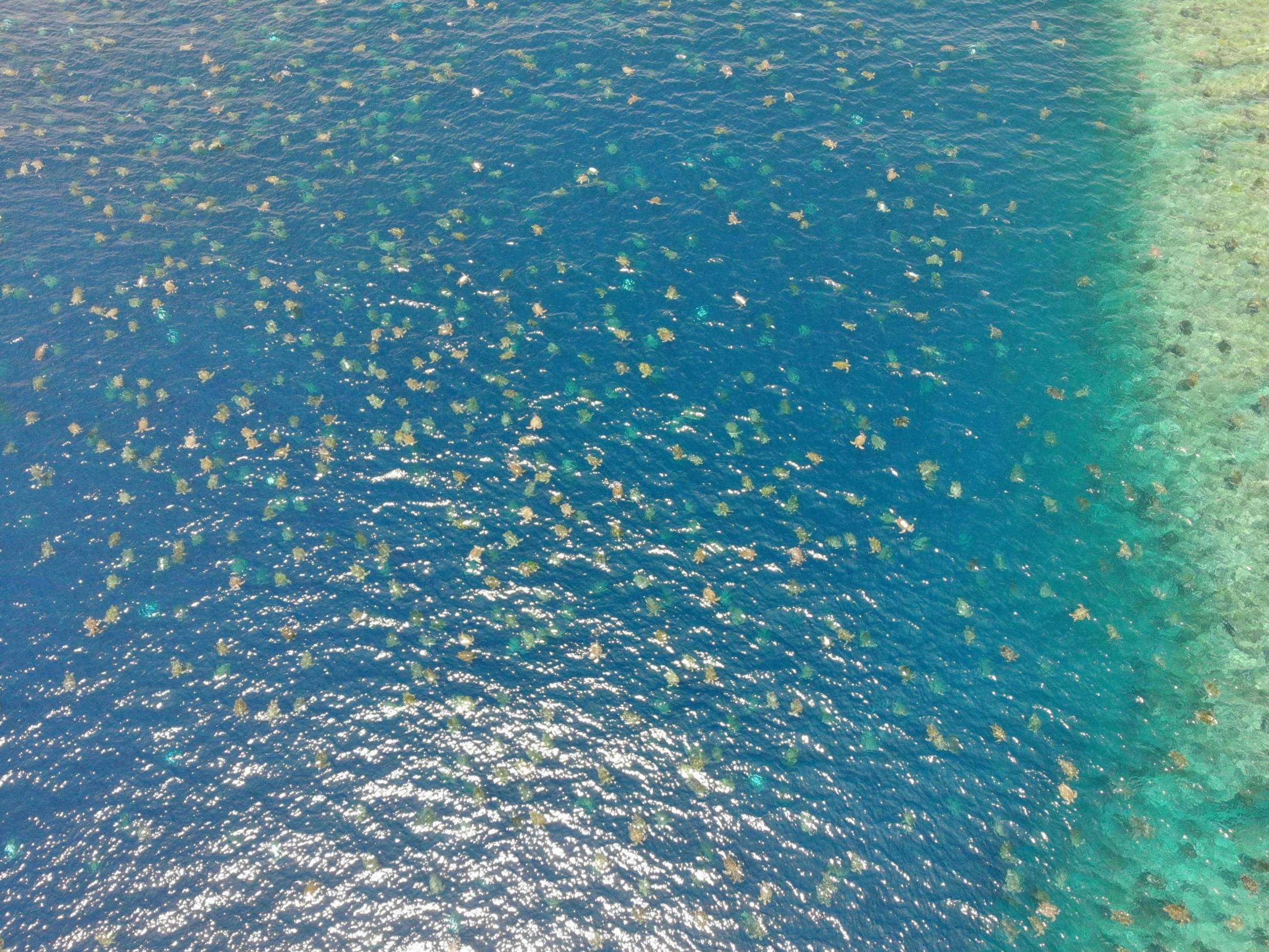This website uses cookies so that we can provide you with the best user experience possible. Cookie information is stored in your browser and performs functions such as recognising you when you return to our website and helping our team to understand which sections of the website you find most interesting and useful.

Scientists have discovered that the world’s largest population of green turtles is nearly twice as big as previously thought, after drones allowed them to observe the animals better.
About 64,000 nesting green turtles were filmed waiting to lay their eggs on Raine Island, a vegetated coral cay located on the outer edges of the Great Barrier Reef.
Australian researchers from the Great Barrier Reef Foundation’s Raine Island Recovery Project said using a drone helped them accurately count thousands of turtles, a task too difficult to do “from a small boat in rough weather”.
Their findings, which were published in scientific journal PLOS ONE, compared three methods for counting the turtles as they made their way to the nesting grounds on Raine Island.
Richard Fitzpatrick, a research partner from the Biopixel Oceans Foundation, said previous vessel-based counts were inaccurate.
“When we compared drone counts to observer counts, we found that we had under-estimated the numbers in the past by a factor of 1.73.
“By using drones, we have adjusted historical data. What previously took a number of researchers a long time can now be accomplished by one drone operator in minutes.”
The paper’s lead author Dr Andrew Dunstan, of the Queensland Department of Environment and Science, said: “Previous population survey methods involved painting a white stripe down the green turtle’s carapace when they were nesting on the beach, then getting on a small boat and counting painted and non-painted turtles.
“Our eyes are attracted much more to a turtle with a bright white stripe than an unpainted turtle, but the pain washed off after a few days and the counting accuracy suffered.
“Trying to accurately count thousands of painted and unpainted turtles from a small boat in rough weather was difficult. Using a drone is easier, safer, much more accurate and the data is permanently stored,” he added.
Managing director of the Great Barrier Reef Foundation, Anna Marsden, congratulated the researchers and described the images produced by the drone as “extraordinary”.
“Raine Island is the world’s largest green turtle nesting site and that’s why we’re working with our Raine Island Recovery Project partners to protect and restore the island’s critical habitat,” she said.
“We’re taking action to improve and rebuild the island’s nesting beaches and building fences to prevent turtle deaths, all working to strengthen the island’s resilience and ensure the survival of our northern green turtles and many other species.”



 Africana55 Radio
Africana55 Radio 

